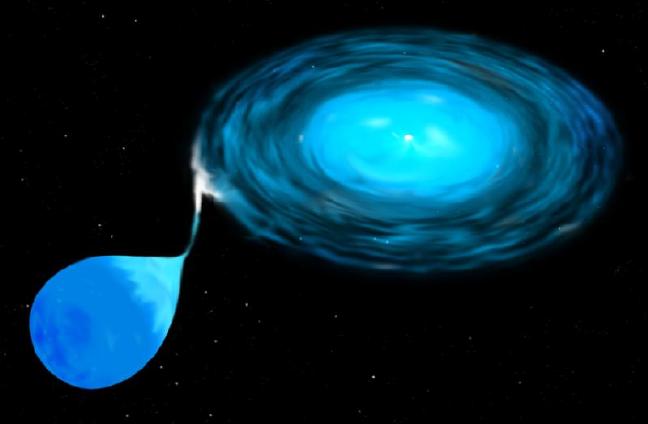
When a star ends its life and sheds its planetary nebula a white dwarf is left behind.
If the white dwarf has a binary companion which is close enough and bloated enough, the gravity of the white dwarf may pull matter away from the companion star. The matter will then spiral onto the surface of the white dwarf. This process of matter spiraling onto a body is called accretion, thus such white dwarfs are called accreting white dwarfs.
As matter accretes on the white dwarf, it builds up on the surface. As it builds up, temperatures rise. If the surface temperature becomes hot enough to fuse hydrogen to helium, a nova occurs.
If the accreted matter pushes the total mass of the white dwarf above the
Chandrasekhar mass, the white dwarf collapses and a type I supernova occurs.